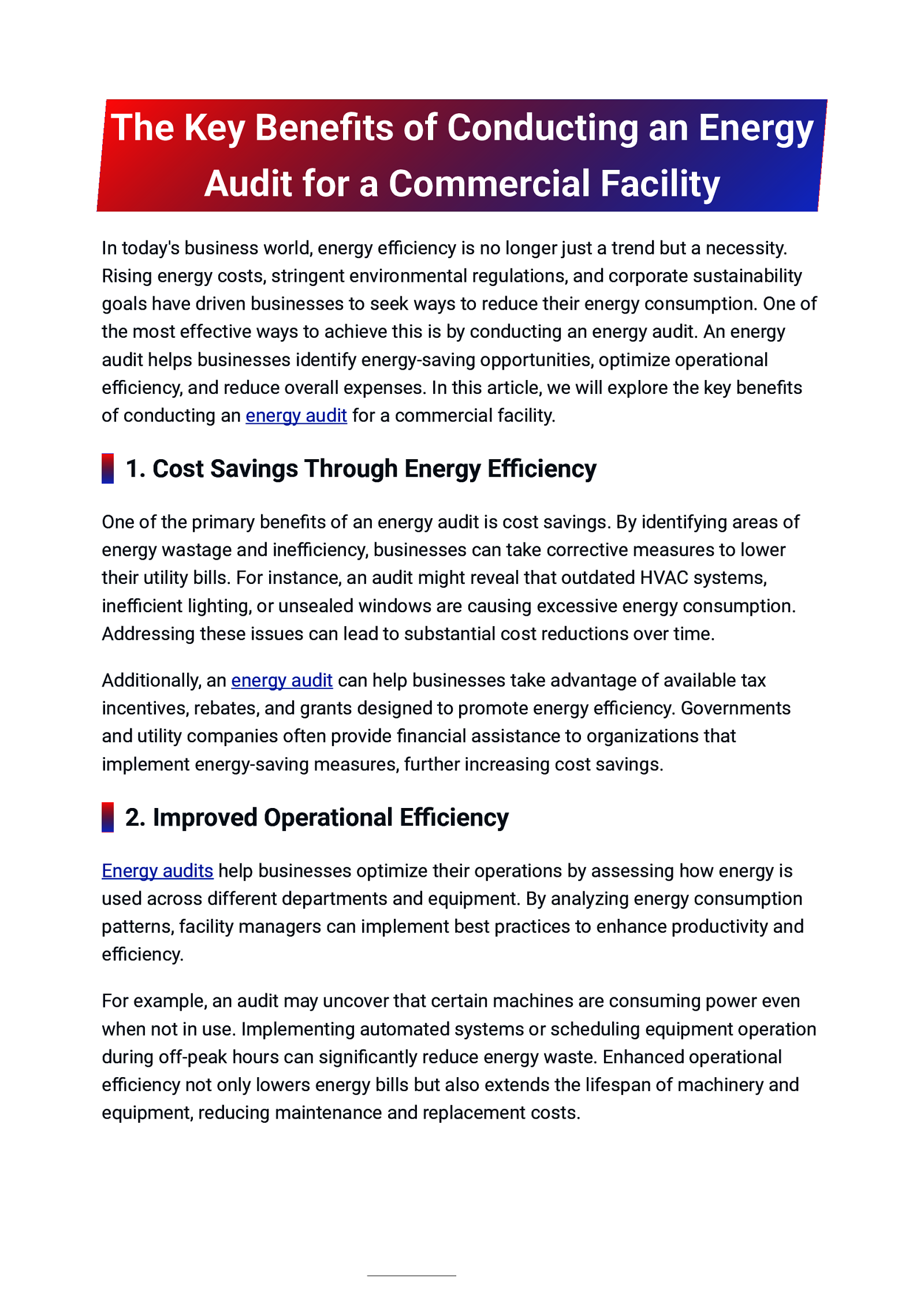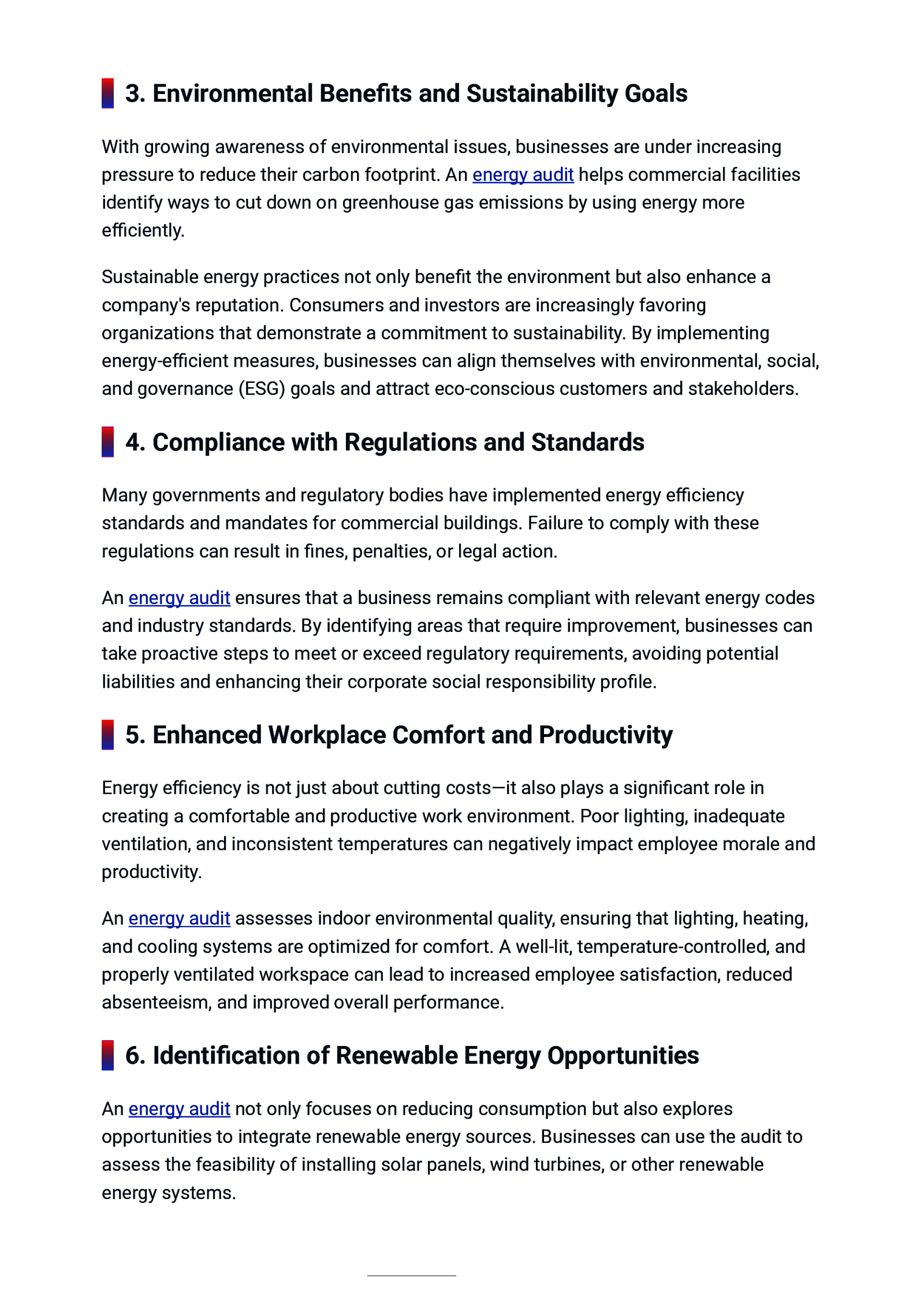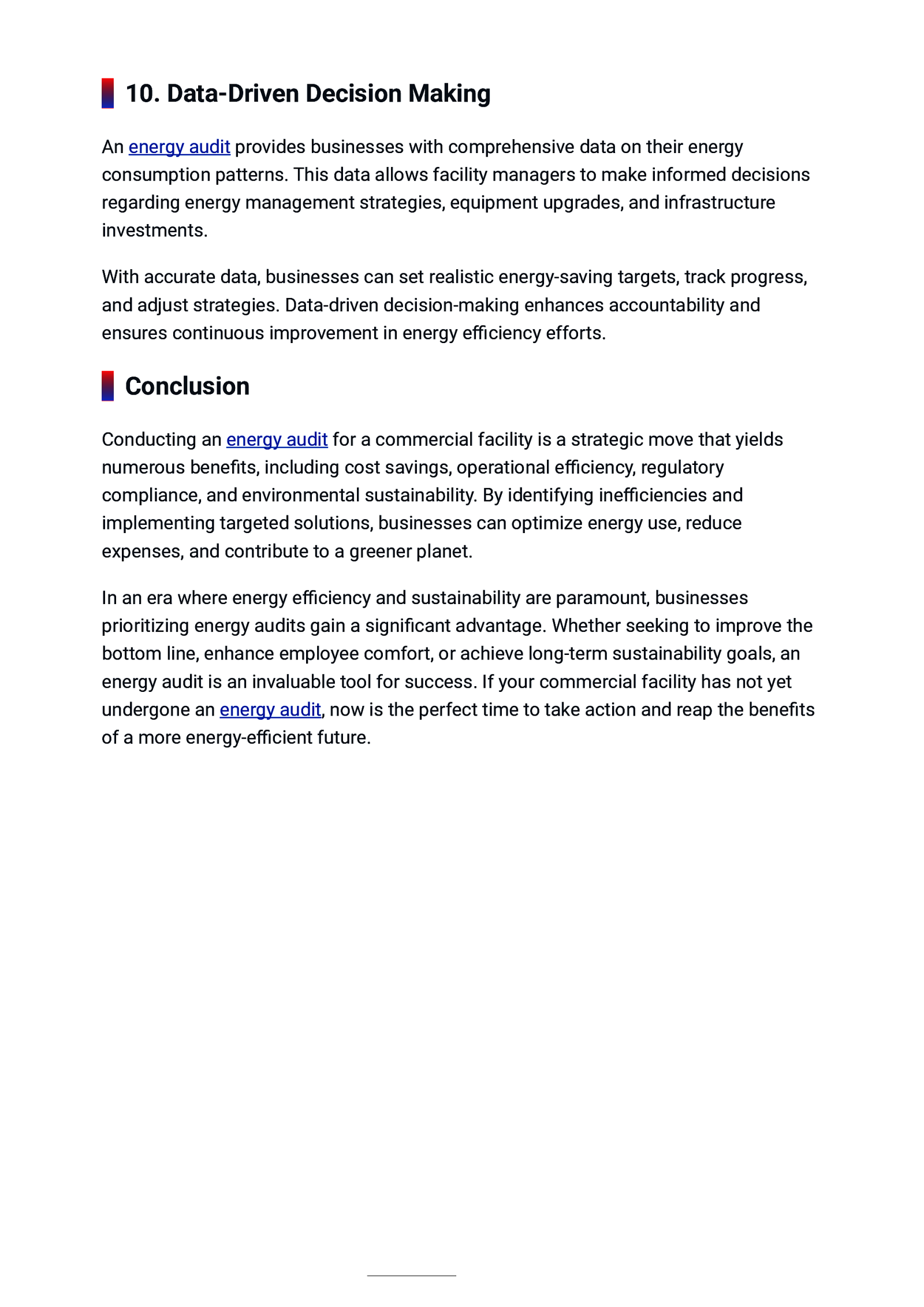The Key Benefits of Conducting an Energy Audit for a Commercial Facility In today’s business world, energy efficiency is no longer just a trend but a necessity. Rising energy costs, stringent environmental regulations, and corporate sustainability goals have driven businesses to seek ways to reduce their energy consumption. One of the most effective ways to achieve this is by conducting an energy audit. An energy audit helps businesses identify energy-saving opportunities, optimize operational efficiency, and reduce overall expenses. In this article, we will explore the key benefits of conducting an energy audit for a commercial facility.
- Cost Savings Through Energy Efficiency One of the primary benefits of an energy audit is cost savings. By identifying areas of energy wastage and inefficiency, businesses can take corrective measures to lower their utility bills. For instance, an audit might reveal that outdated HVAC systems, inefficient lighting, or unsealed windows are causing excessive energy consumption. Addressing these issues can lead to substantial cost reductions over time. Additionally, an energy audit can help businesses take advantage of available tax incentives, rebates, and grants designed to promote energy efficiency. Governments and utility companies often provide financial assistance to organizations that implement energy-saving measures, further increasing cost savings.
- Improved Operational Efficiency Energy audits help businesses optimize their operations by assessing how energy is used across different departments and equipment. By analyzing energy consumption patterns, facility managers can implement best practices to enhance productivity and efficiency. For example, an audit may uncover that certain machines are consuming power even when not in use. Implementing automated systems or scheduling equipment operation during off-peak hours can significantly reduce energy waste. Enhanced operational efficiency not only lowers energy bills but also extends the lifespan of machinery and equipment, reducing maintenance and replacement costs.



